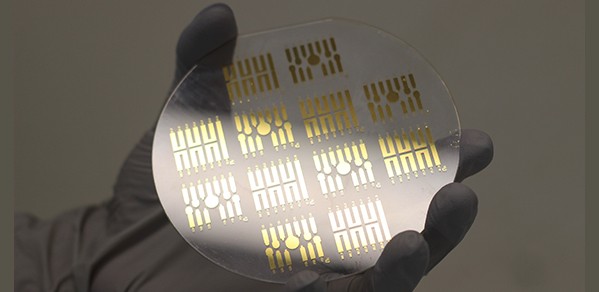
A new method for the miniaturisation of biosensors will enable new possibilities for minimally invasive implants. The miniaturised transistors are fabricated on thin, flexible substrates, and amplify biosignals, producing currents more than 200 times larger than analogous alternatives.
With this type of sensor, physicians will be able to gain unprecedented real-time data for tracking their patients’ health.
Sophia Bidinger
Diagnosing and monitoring diseases often rely on the detection of molecules called “biomarkers”. However, the detection of such biomarkers need periodic blood draws, which are expensive, time consuming, require specialised equipment, and provide no continuous data. To avoid this, and provide real-time biomarker detection, Professor Kevin Plaxco’s team at the University of California Santa Barbara pioneered the development of implantable aptamer-based sensors. These devices are electrochemical sensors based on DNA and they successfully track small molecules in real time.
A key step to translate these sensors to real-life applications in the clinic is to make them as small and minimally invasive as possible. To solve this miniaturisation challenge, researchers at Cambridge1 teamed up with the Plaxco Lab to discover a way to combine aptamer-based sensors with an amplifying transistor platform. Together, they developed biosensors based on organic electrochemical transistors (OECTs), which maintain high performances of the aptamer sensors even when shrunk to quite small dimensions. The results are reported in the journal Science Advances.
Research student Sophia Bidinger, lead author of the paper, said: “This work is an important step towards creating better tools for healthcare providers. With this type of sensor, physicians will be able to gain unprecedented real-time data for tracking their patients’ health.”
Previous aptamer sensors were made of thin, millimeters-long wires. In contrast, the new transistor biosensors are so small that they are barely visible to the naked eye. This technology will be useful for medical applications that require sensors in delicate areas. For example, such a minimally invasive sensor could enable implantation in the brain – an ideal region to track biomarkers linked with mental disorders, such as depression.
Paper co-author Professor Tawfique Hasan said: “There is a huge market opportunity for continuous molecular monitoring. Besides glucose, there are not very many commercially available sensors. More tools for supporting continuous, in vivo sensing will save lives.”
The cross-disciplinary research team will now explore possible next directions of this work. For example, another benefit of signal amplification is improved lifetime, so the sensor can operate for longer without being replaced. Each of these improvements is one step closer to deployment in humans for tracking anything from drugs to hormones to neurotransmitters.
Paper co-author Professor George Malliaras added: “The most exciting aspect of this work is that it could be used to detect virtually any small molecule. This will help doctors gain much more patient specific insight than ever before.”
Reference:
Sophia L. Bidinger; Scott T. Keene; Sanggil Han; Kevin W. Plaxco; George G. Malliaras; Tawfique Hasan. ‘Pulsed transistor operation enables miniaturization of electrochemical aptamer-based sensors.’ Science Advances (2022). DOI: 10.1126/sciadv.add4111
- - -
1 From the Electrical Engineering Division, Department of Engineering, and the Department of Physics.

